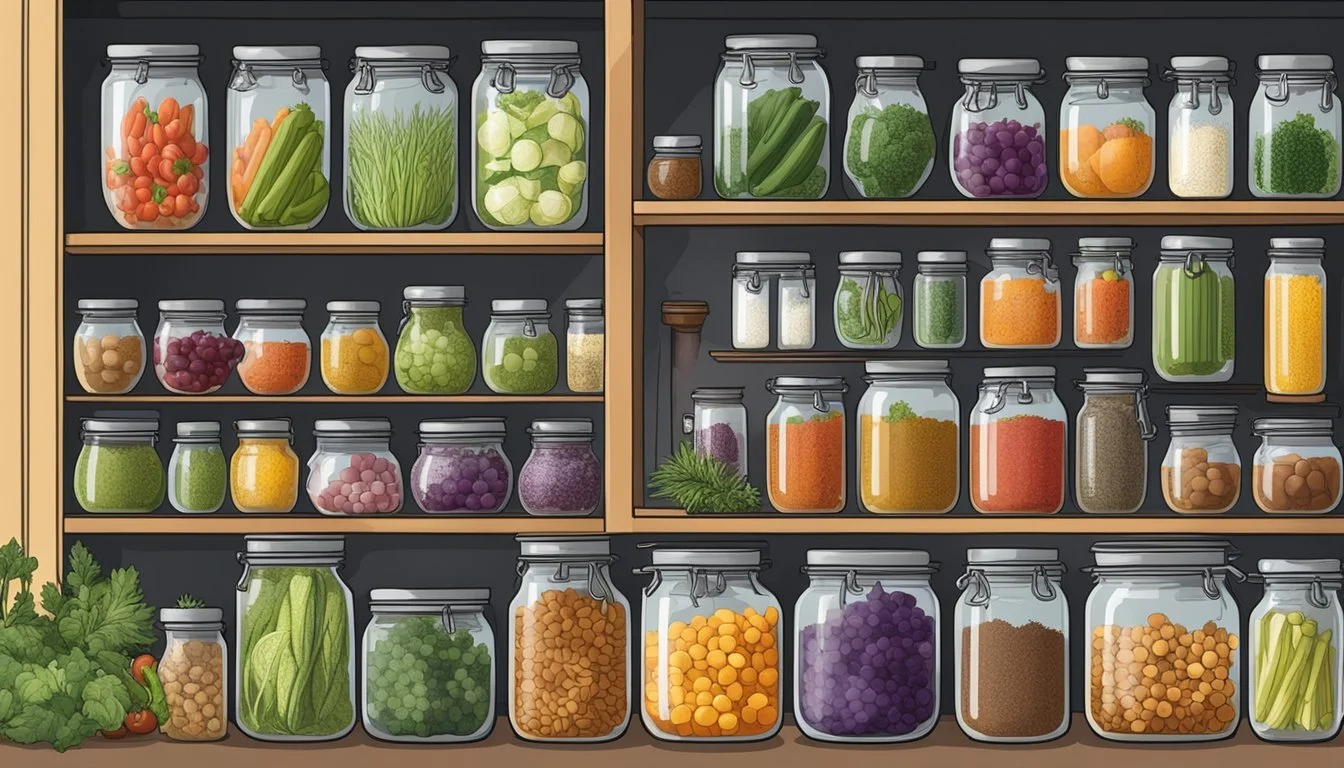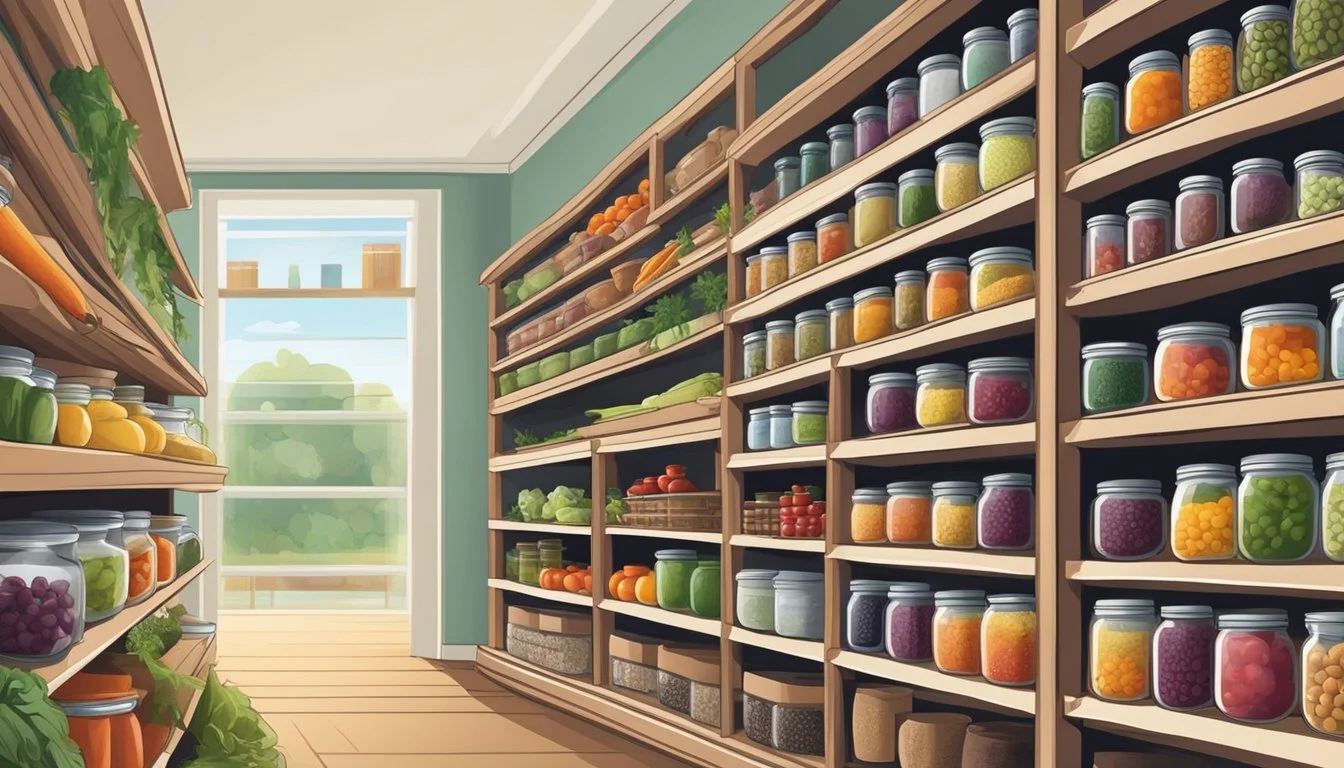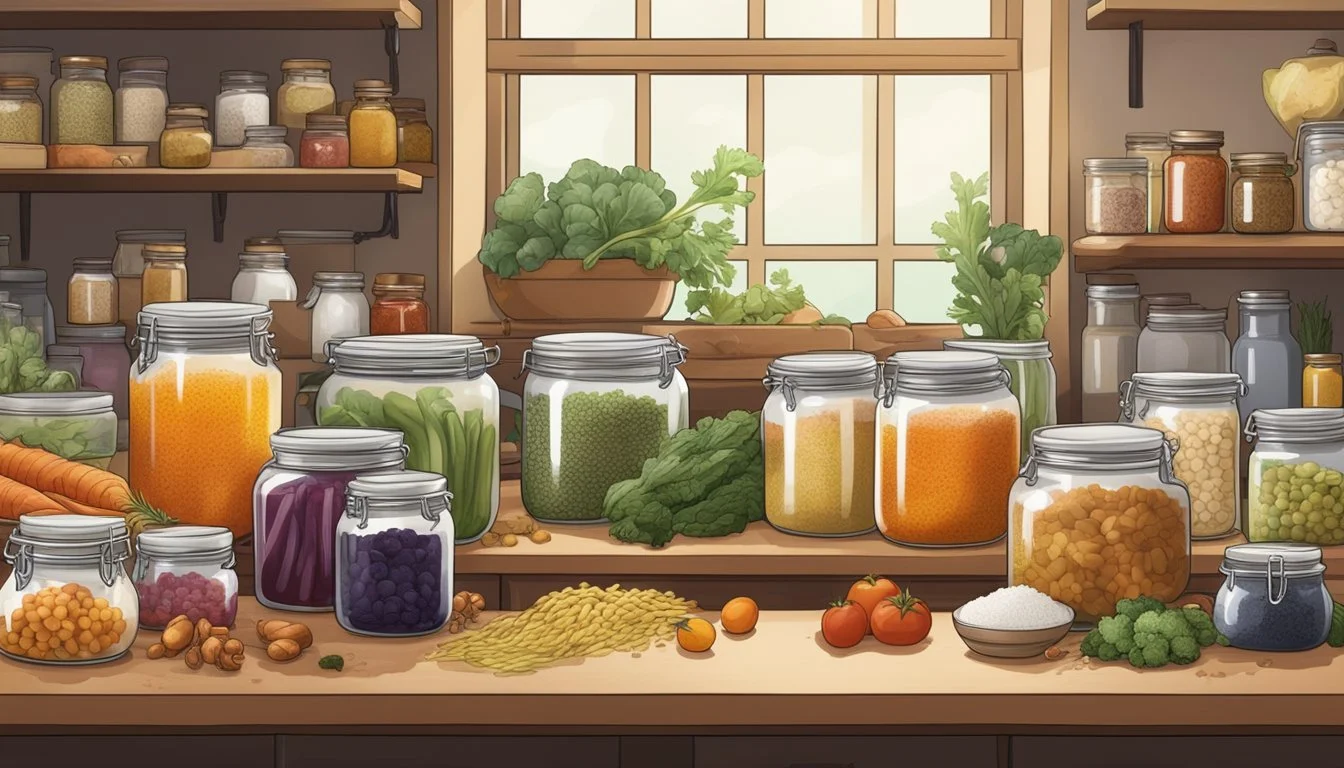How to Master the Art of Fermentation at Home
A Step-by-Step Guide
Fermentation is a time-honored culinary practice that extends beyond mere food preservation. It is an art that has been refined across cultures, enabling the creation of a diverse array of flavors and textures. At home, mastering fermentation allows individuals to transform simple ingredients into complex, probiotic-rich foods. From sourdough bread to tangy sauerkraut, and effervescent kombucha, the techniques of fermentation unlock a new dimension in homemade fare.
Successful fermentation hinges on understanding the basic principles that govern the process. It relies on the controlled growth of beneficial bacteria and yeasts that metabolize natural sugars to produce lactic acid, alcohol, and carbon dioxide. This biochemical transformation not only imparts unique flavors and aromas but also enhances the nutritional value of foods. By manipulating variables such as temperature, time, and salt concentration, home fermenters can cultivate an environment conducive to the desired microbial activity.
While the practice may seem daunting at first, it becomes approachable with a bit of guidance. Many have embarked on the fermentation journey, starting with readily-available resources such as glass containers, cabbage for sauerkraut, or apple scraps for apple cider vinegar. With patience and observation, anyone can refine their craft and produce delightful fermented goods that contribute to both gastronomic pleasure and well-being.
Understanding Fermentation
Fermentation is a process steeped in science and tradition, with remarkable health benefits and cultural importance spanning thousands of years. It involves the transformation of food by beneficial microorganisms to enhance flavor, nutritional value, and shelf life.
The Science of Fermentation
Fermentation is a metabolic process where microorganisms such as lactobacillus bacteria convert carbohydrates into alcohol or acids under anaerobic conditions. This process is essential for producing foods like yogurt, cheese (how long does cheese last?), and sauerkraut. It creates conditions where beneficial bacteria thrive and produce lactic acid, preserving the food and imparting a distinctive tangy flavor.
Health Benefits of Fermented Foods
Fermented foods (What wine goes well with fermented foods?) are rich in probiotics, which promote a healthy balance of gut bacteria and can be a powerful digestive aid. These probiotics contribute to gut health by enhancing the digestive system, improving nutrient absorption, and supporting the endocrine system. Fermented foods can thus play a role in maintaining one's overall health and well-being.
Historical and Cultural Significance
The art of fermentation is a practice dating back to ancient times, often considered both a science and an art form. Works like "Wild Fermentation" by Sandor Ellix Katz and "Nourishing Traditions" illustrate the intricate relationship between culture and fermentation. Cultures worldwide have unique fermentation methods forming a key part of their culinary heritage, from Korean kimchi to German sauerkraut to Russian kvass.
Getting Started with Home Fermentation
Venturing into home fermentation is an engaging way to create healthful and flavorful foods. The key to success lies in starting with the right equipment and selecting quality ingredients.
Essential Equipment
An enthusiast needs a few basic tools to begin fermenting at home:
Jars: Glass mason jars are ideal for fermentation. They are easily sealed and come in various sizes.
Weights: Fermentation weights, or other suitable heavy objects, keep ingredients submerged in the brine.
Lids with Airlocks: These specialized lids allow gas to escape without letting in contaminants.
Spoons and Knives: Required for preparing and handling ingredients.
It may also be useful to have pH strips at hand to monitor the acidity levels, ensuring a safe fermentation process.
Tool Use Glass Mason Jars Storing and fermenting the ingredients Fermentation Weights Keeping vegetables submerged in liquid Lids with Airlocks Allowing gases to escape while keeping contaminants out Spoons and Knives Preparing ingredients pH Strips Testing acidity levels
Selecting Quality Ingredients
The quality of ingredients greatly affects the outcome of the fermentation process. They should follow these guidelines:
Produce: Organic or fresh produce is preferable for optimal flavor and health benefits. This includes fresh cabbage for sauerkraut or vegetables for kimchi.
Salt: Sea salt without additives is typically used to create the fermenting brine.
Spices: They can be added for flavor; freshness is key.
When making dairy ferments, use the freshest dairy available. Similarly, when making vinegar, having quality starter vinegar can significantly influence the final product's quality.
In summary, starting with proper tools and high-quality ingredients sets the stage for successful home fermentation projects, yielding delicious and healthful foods like sauerkraut, kimchi, and more.
The Fermentation Process
Fermentation at home is both an art and a science, involving specific steps from prepping produce to creating an ideal environment for microorganisms to thrive, ultimately yielding flavorful and preserved foods.
Preparing Your Produce
Before beginning the fermentation process, thorough cleaning is crucial to reduce the risk of contamination. For example, cabbage destined for sauerkraut needs to be rinsed and then cut into fine strips. Fresh produce often fares better in fermentation due to a higher content of natural sugars, which aids in the creation of a suitable environment for beneficial bacteria.
Creating the Fermentation Environment
In lacto-fermentation, an anaerobic (oxygen-free) environment is essential. The process involves submerging the produce, such as cabbage for sauerkraut, in a brine solution. This solution is typically a measured mixture of salt and filtered water. It is vital for fermenting vegetables that they remain below the liquid to prevent contact with oxygen. Salt plays a dual role, drawing out water from the produce to create more brine and inhibiting the growth of undesirable bacteria.
Steps to Create Brine Solution Salt Concentration 2-5% Water Filtered (chlorine-free) Temperature Below 75º F (24º C)
Monitoring Fermentation Progress
During fermentation, the produce must be checked regularly for signs of mold, yeast growth, or off smells. The flavor and texture are good indicators of progress. Vegetables like sauerkraut are usually ready in about 1 to 4 weeks, and tasting them can help determine if the desired tanginess is achieved. The pH level should drop below 4.6 for safety, which correlates with the acidic taste typical of properly fermented foods. Temperature control is crucial throughout; ideal temperatures range from above freezing to below 75º F (24º C), depending on the specific fermentation process.
Recipes and Techniques
Mastering fermentation at home enhances the flavor, preservation, and nutritional value of foods. This section outlines specific recipes and techniques for creating fermented vegetables, dairy products, and beverages, each bringing a unique set of benefits and tastes to your kitchen.
Basic Fermented Vegetables
Fermented vegetables are a cornerstone of home fermentation. They are often prepared with a simple brine solution, which is just water saturated with salt.
Kimchi: This traditional Korean side dish begins with cabbage and radishes covered in a paste of garlic, ginger, and chili flakes, then left to ferment for several days.
Sauerkraut: Shredded cabbage is mixed with salt and packed tightly in a jar to ferment under its brine. This process typically takes about 2-4 weeks.
Pickles: Cucumbers are submerged in a brine along with spices like dill (how long does dill last?)and garlic. They are then left to ferment for several days to a few weeks, resulting in crunchy and tangy pickles.
Fermented Dairy Products
Aside from imparting a distinctive tang, fermented dairy products are easier to digest and offer increased levels of beneficial probiotics.
Yogurt: Heating milk and introducing live yogurt cultures, then maintaining a warm environment, allows the mixture to thicken and develop over several hours.
Cheese: The cheese-making process involves culturing milk with bacteria, followed by the coagulation of milk proteins with an enzyme called rennet. Aging then develops the cheese's flavor and texture.
Kefir: Similar to yogurt, kefir is made by adding kefir grains to milk, which are a combination of yeast and bacteria, and letting the mixture ferment for about 24 hours.
Fermented Beverages
Fermented beverages range from refreshing drinks to intricate wines, each requiring careful control over the fermentation variables.
Kombucha: This effervescent tea is produced by adding a SCOBY (symbiotic culture of bacteria and yeast) to sweetened tea and allowing it to ferment for 7-14 days before bottling.
Wine: Grapes are crushed to release their juice, which is then fermented with yeast. The yeast transforms the sugars into alcohol over weeks or months of fermentation.
Fermented Ketchup: As an unconventional fermented beverage, homemade ketchup can be fermented with whey or a salt brine to create a probiotic condiment, which undergoes a short fermentation of about 2-3 days.
Flavoring and Customization
Mastering the art of fermentation at home involves infusing personal touches to create flavors that cater to individual palates. This section focuses on incorporating a variety of spices, sugars, and techniques to enhance the taste and flavor profile of fermented foods.
Experimenting with Flavors
When embarking on the journey of fermenting at home, individuals have a vast canvas for flavor experimentation. The addition of spices can profoundly influence the overall taste of fermented foods. For instance, merging cinnamon or cardamom into the fermentation of fruits adds a warm, sweet complexity. Similarly, infusing chili peppers or garlic can introduce a bold, savory edge to vegetables like sauerkraut.
Sugars play a dual role: they not only sweeten the product but also serve as fuel for the fermentation process. Experimenting with different types, such as raw cane sugar, honey, or fruit juices, can yield varying degrees of sweetness and flavor profiles.
Here's an example of how to use sugars to customize the flavor of kombucha:
Fruit juices: Add natural sweetness and fruity notes.
Honey: Imparts a rich, floral taste.
Raw cane sugar: Provides a more traditional, less intrusive sweetness.
The inclusion of vinegar introduces acidity and can alter the ferment's final flavor. Depending on the desired outcome, using apple cider or balsamic vinegar can add a complex or fruity tartness to the ferment.
Innovative Fermentation Ideas
Creativity in fermentation allows for innovative flavors and niche products such as fermented ketchup or emmer-based sourdough. Crafting homemade fermented ketchup with a balance of salt, spices, and a hint of sweetness creates a condiment that offers more depth than store-bought versions. The grain emmer can be used in sourdough starters for those seeking a nuttier, ancient grain flavor in their bread.
A table showcasing spice and sugar pairings for fermented foods:
Food Item Spices Sugars Fruit Ferments Cardamom, Cinnamon, Vanilla Honey, Maple Syrup Sourdoughs Caraway, Fennel (how long does fennel last?) Malted Barley Syrup Sauerkraut Juniper Berries, Dill Apple Juice
For a unique twist on fermented foods, combining aromatic herbs or floral notes offers a refreshing alternative. Edible flowers or herbs like lavender and rosemary can transform a simple ferment into an artisanal experience. Remember, the ratio of these ingredients should be carefully controlled to prevent overpowering the intrinsic flavors of the ferment.
Preservation and Storage
Mastering the art of fermentation at home implies having a good grasp on preservation and storage techniques. Proper preservation extends the shelf life of fermented foods, while the right storage ensures the stability and safety of these probiotic-rich items.
Extending Fermented Foods' Shelf Life
The shelf life of fermented foods is predominantly extended through the process of lactic acid fermentation. This method not only preserves the food but also enhances its nutritional value. For optimal shelf life extension, fermented foods should be stored in a cool, dark place, typically at temperatures between 55-75°F, which slows down the fermentation and preserves the food for a longer period.
Refrigeration: Post-fermentation, moving items to the refrigerator can significantly slow down the fermentation process, extending the edible lifespan of the product.
Anaerobic Environment: Ensuring that the fermented food remains in an anaerobic (oxygen-free) environment can prevent spoilage by unwanted bacteria and molds.
Packaging and Containers
Choosing the correct packaging and containers is crucial for the maintenance and quality of fermented foods.
Mason Jars: Often used for their availability and ease of use, mason jars are a go-to choice. Ensure that they are properly sterilized before use to avoid contamination.
Lids: Fermentation lids or airlocks help release gases and create an anaerobic condition. They are a critical component of a fermentation kit and can be used on most mason jars or similar containers.
Fermentation Kits: For beginners or those who prefer convenience, specialized fermentation kits provide all the necessary tools. They typically include jars, lids, weights, and sometimes recipes.
Packaging should not only be tight and secure but also made of non-reactive materials to avoid any interaction with the acids produced during fermentation. Remember that consistent conditions and proper equipment are key to successful long-term preservation and storage of fermented foods.
Health and Safety Considerations
Mastering the art of fermentation at home not only opens up a world of delicious food but also requires attentiveness to health and safety considerations. Safe fermentation practices protect against harmful bacteria and ensure a healthy, enjoyable product.
Understanding Potential Risks
Fermentation is an anaerobic process that can inadvertently cultivate not only the desired beneficial bacteria but also harmful microorganisms such as unwanted molds and pathogens. Home fermenters should be aware of the visual and olfactory signs that indicate when a fermentation has gone awry. Molds, for example, may appear on the surface and should be promptly removed; however, any underlying product affected by mold should be discarded to avoid health risks. Additionally, fermenting beverages can sometimes unintentionally lead to the production of alcohol. Care should be taken, especially when sharing fermented foods with children or those who avoid alcohol for health or personal reasons.
Ensuring Proper Sanitation
Sanitation is paramount in the fermentation process to reduce the potential for foodborne illnesses. One must ensure all equipment, including jars, weights, and utensils, are thoroughly cleaned and, where possible, sterilized.
Cleaning:
Wash all equipment with hot, soapy water.
Rinse thoroughly to remove any soap residue.
Sterilization (Optional, but recommended for added safety):
Boil tools for at least 10 minutes or use a suitable sterilizing solution.
Maintaining an anaerobic environment is critical, as it inhibits the growth of unwanted aerobic bacteria. The ferment should be kept submerged under the brine, and airlocks or fermentation weights can be used to achieve this. Once fermentation is complete, transfer the product to cold storage to slow fermentation and preserve food safety.
By adhering to these health and safety considerations, one ensures both the success of their fermentation projects and the well-being of those enjoying their homemade ferments.
The Social and Economical Impact of Home Fermentation
Home fermentation not only enriches the dietary landscape but also fosters a sense of community and contributes to sustainable practices, offering notable economic benefits.
Fermenting Food and Community
Community Building: The art of fermentation often acts as a focal point for social gatherings and knowledge sharing. Workshops and local food events centered on fermentation processes are a testament to how it can bring people together. Enthusiasts often encourage farmers' markets participation, where they bond over shared interests in diets and low-tech methods.
Cultural Exchange: It greatly facilitates cultural exchange, with diverse communities sharing traditional recipes and techniques. People often discover new fermented foods, which become integrated into their diets, enriching the cultural fabric of communities.
Economic Benefits and Sustainability
Cost-Saving: One of the most immediate economic benefits of fermenting food at home is the cost-saving aspect. The process typically involves low-tech equipment and can transform affordable ingredients into nutrient-rich foods.
Supports Local Economies: By sourcing ingredients from local producers, home fermenters often support farmers and small businesses, injecting money back into their local economies.
Sustainability: Fermentation is inherently sustainable. It can reduce food waste by preserving seasonal produce. This aspect aligns with global efforts to minimize waste and pandemic-induced disruptions in food supply chains.
Sharing Economy: Excess produce can be fermented and shared within the community, fostering a community-supported agriculture model.
By aligning with economic and environmental sustainability, the practice of home fermentation proves to be more than just a hobby – it is a competent participant in the larger context of social well-being and responsible living.






